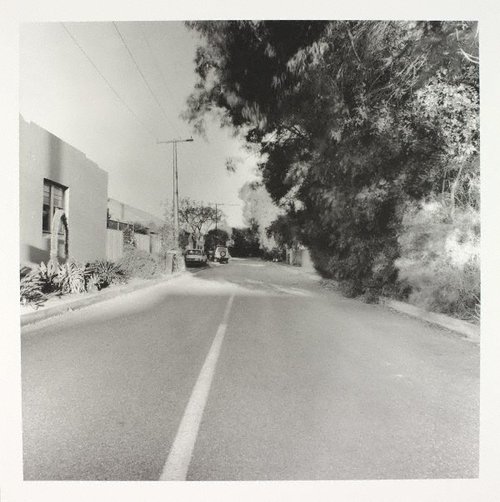

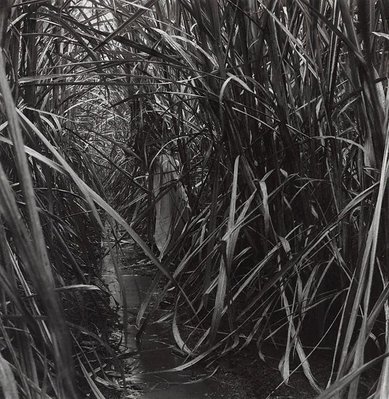
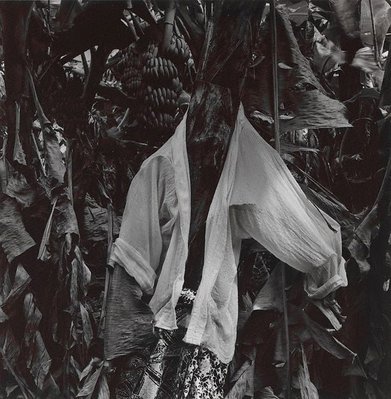
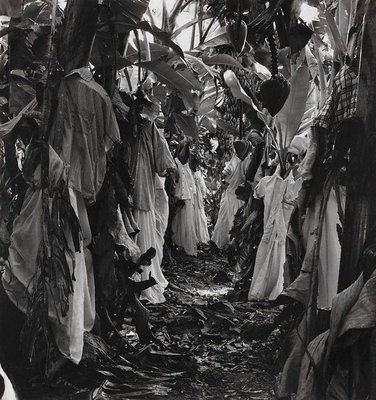
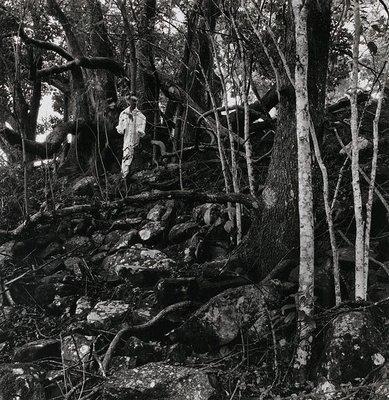
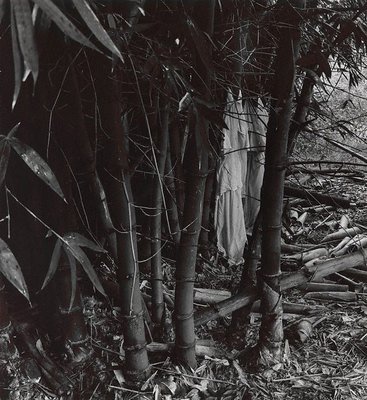
-
Details
- Date
- 1999
- Media category
- Photograph
- Materials used
- 7 gelatin silver photographs
- Edition
- A/P (from an edition of 9 plus 2 artist’s proofs)
- Dimensions
-
7 photographs: each 52.0 x 49.0 cm frame
:
a - a, 23 x 26 cm, image
b - b, 23.5 x 25.6 cm, image
c - c, 24.5 x 23.8 cm, image
d - d, 24.8 x 24.2 cm, image
e - e, 25.4 x 23.9 cm, image
f - f, 24.5 x 23.6 cm, image
g - g, 25.8 x 23.7 cm, image
- Signature & date
Signed and dated c. verso each photograph, pencil "... Simryn Gill 1999".
- Credit
- Gift of the artist 2005
- Location
- Not on display
- Accession number
- 21.2005.a-g
- Copyright
- © Simryn Gill
- Artist information
-
 Simryn Gill
Simryn Gill
Works in the collection
- Share
-
-
About
In 'Rampant', Simryn Gill turned her eye once more on Australia '… to see if I could find friends among the local flora'. This series of photographs was shot in sub-tropical northern New South Wales and shows unnerving images of trees and plants dressed up in clothes. In the photographs these ghostly forms are seen lingering in groves of introduced plants such as bamboo, bananas, sugar cane and camphor laurels. The plants are dressed in lungis and sarongs, generic clothing from South and South- East Asia, where many of these plants originate. 'Rampant' is a form of memento mori, a record of the aspirations that saw plants only too successfully introduced into a pristine terrain which was unable to offer any resistance to their feral ways.
French philosopher Gaston Bachelard condenses his complex thinking on creativity and the human imagination into the metaphor of a tree, with its living, evolving growth and the simultaneity of being earth bound and heaven reaching, symbolising both the real and ideal.1 However, what happens when that tree is a camphor laurel, an admirable thing in its native land but out of place and wrecking havoc along the creeks of rural New South Wales?
Many once-useful species are now noxious weeds and over-successful colonisers, despised for their commonness, their success, their over-familiarity, and for being where we feel they should not be. They disrupt the order we would like to impose and remind us of our fallibility when attempting to play god and create our own earthly Edens. The language of natural purity that we use to protect our landscape also resonates with the nationalist rhetoric used to police our borders and to decide who are acceptable new arrivals and who are illegal aliens, often determined through scales of economic and social usefulness.
1. Gaston Bachelard, 'The totality of the root image', On poetic imagination and reverie, editor and translator Colette Graudin, Spring Publications, Quebec, 1987, p 85
-
Exhibition history
Shown in 2 exhibitions
Photography & place, Art Gallery of New South Wales, Sydney, 17 Mar 2011–29 May 2011
Australia, Royal Academy of Arts, London, 21 Sep 2013–08 Dec 2013
-
Bibliography
Referenced in 4 publications
-
Vigen Galstyan, Look, 'Earth scans and bush relevances. Photograohy & place in Australia, 1970s til now', pg.26-29, Sydney, Mar 2011, 27 (illus.), 29. illustration is of part e
-
Kajri Jain, Here art grows on trees: Simryn Gill, 'Pause', pg. 163-184, Sydney, 2013, 169, 170 (illus.), 278.
-
Museum of Contemporary Art, Taipei, Fashion accidentally, Simryn Gill, pg.59-64, 2007, 63-64 (illus.).
-
Daniel Thomas, Australia, 'Elizabethan post-colonial 1950-2013', pg. 226-288, London, 2013, 271 (illus.). cat.no. 188
-



